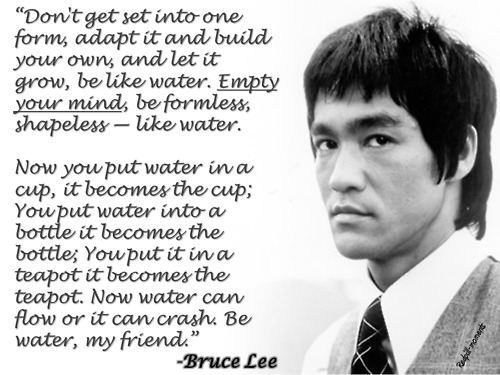I read an interesting blog post about the responsibilities of companies to change their views of the phrase “survival of the fittest”. This article is about corporate social responsibility and the ways that we interact with nature. While I think it is a great post, I would like to talk about the same concept, but on a level that is more for the manufacturing middle-management folks.
Let’s interpret the phrase “survival of the fittest” to be “the best at adapting”. In business that means flexibility, versatility, and nimbleness. But how can we influence these factors when we are a cog in the big business machine?
- Strategic development of a process model that allows for smaller runs and higher flexibility. As an Operations Leader, you have the ability to influence how you design your department. Most companies are looking for the big runs, fewer changeovers, and highest volume. But what if you could create a section of your department that is specialized at small runs, reduced inventory, and high-speed turnaround? Could you provide a service to customers at a premium? Could you handle frequent changeovers as a matter of course? Check out QRM. This methodology might be able to help you get started with something.
- Stop focusing on reducing changeover time and start focusing on eliminating minor stops. Let’s look at a typical production line. If you run a product for 16 hours with equipment speeds of 20 cases/minute you should see 19,200 cases at the end of that time. But it takes you 20 hours to run that amount. Then you have to perform a 2-hour changeover to the next product. Most companies want to reduce changeover time because that is downtime where you are making zero units. But the changeover has to happen. Even if you cut the changeover time in half you only saved 1 hour. But it took you an extra 4 hours to run the product. Cut that in half and you save 2 hours. Minor stops on a line can result in huge hits on efficiency. Quicker runs equal more capacity for new volume.
- Slow down to speed up. It sounds like taboo, but Maintenance groups will tell you that if you run your car at 9000 rpm you won’t get as far as if you run it at 3000 rpm. But that is exactly what we do to our production equipment. We run it to the max and shorten its life and Mean-Time Between Failure (MTBF). This not only increases downtime and Maintenance costs, but it also reduces the machine’s availability for more volume. Conduct a constraint analysis on your line and set the limiting machine to at least 10% below its maximum rate. You will see a smoother run and a more predictable life of the equipment. Remember, it is about cases out of the door, not units per minute off of the filler.
- Set goals for management and supervisors that reward flexibility. It is a difficult thing to do, but try setting department KPIs around how you manage the department, not how much volume you push through the door. You may have to create a set of KPIs that you track internally and still publish the ones that upper management wants to see. Think about how the behaviors of your team will benefit your business and create metrics around those behaviors. It will take some thought, but you will have a better performing system out of the deal.

